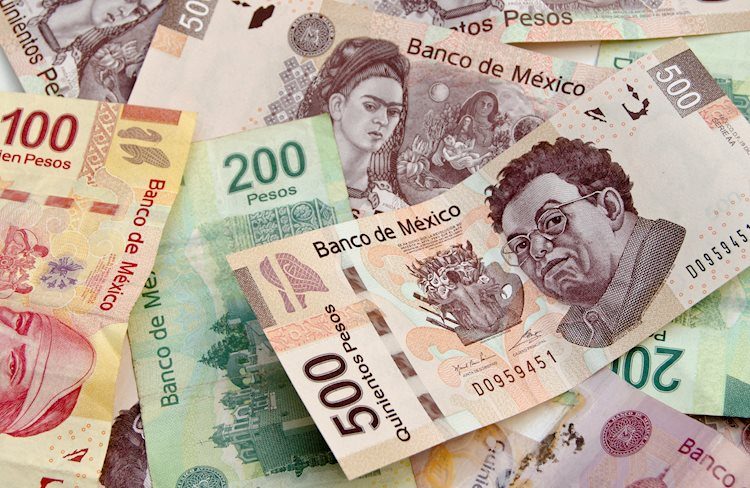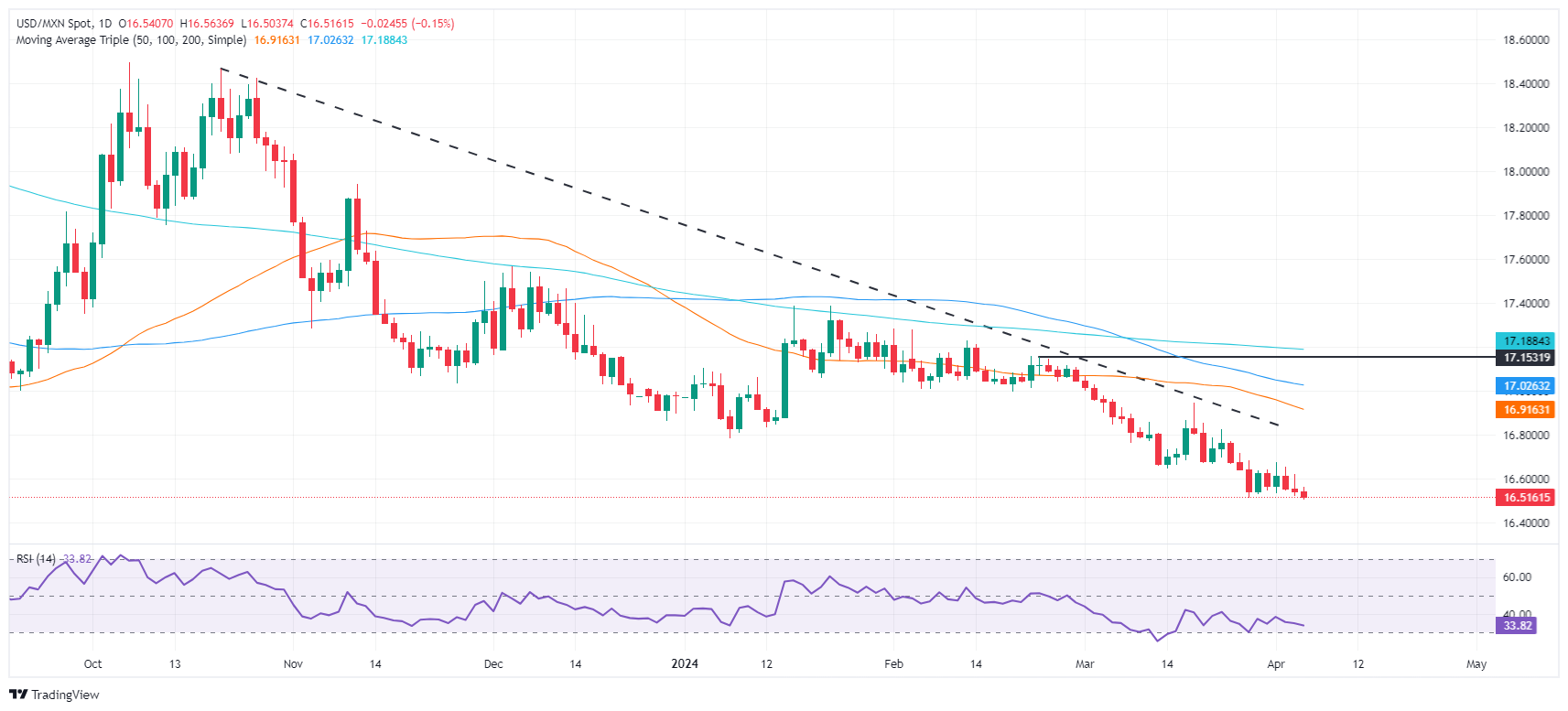- Mexican Peso is slightly up versus the US Dollar on cautious trading as Consumer Confidence deteriorates.
- Decrease in Mexico’s Consumer Confidence and Manufacturing PMI slowdown highlight challenges amid Banxico’s rate adjustments.
- Remittances remain a key support for the Peso, overshadowing near-shoring gains amid broader economic considerations.
The Mexican Peso prints minuscule gains against the US Dollar on Thursday after the release of economic data from Mexico and the United States (US). That and recent Federal Reserve officials crossing the newswires keep the American currency pressured amid rate cut speculation. At the time of writing, the USD/MXN trades at 16.54, down 0.01%.
Mexico’s economic docket witnessed a drop in March’s Consumer Confidence, according to the National Statistics Agency (INEGI). Data shows the economy is still growing but began to lose some momentum as March’s Manufacturing PMI decelerated amid higher interest rates set by the Bank of Mexico (Banxico).
Meanwhile, Mexico’s remittances continued to be the main driver of the Peso’s strength. There’s speculation about near-shoring, but according to an article by EL CEO, in 2023 Foreign Direct Investment (FDI) stood at $36.058 billion, while remittances amounted to $63.345 billion. Sources cited by EL CEO stated, “We must not fail to point out that this is a gap in Mexico’s productive capacity and a lack of opportunities. We are getting the kind of external savings.”
The US economy witnessed a cooler labor market as more Americans applied for unemployment benefits. The Balance of Trader revealed that the deficit widened compared to January’s data.
Daily digest market movers: Mexican Peso strength unlinked to Foreign Direct Investment
- Mexico’s Consumer Confidence stood at 47.3 in March, below February’s 47.4.
- A Reuters poll published on April 4 reveals that most economists foresee the USD/MXN appreciating 4.7% to 17.38 in twelve months, down from 18.24 projected in the March poll.
- Ahead on Thursday, Banxico releases the latest meeting minutes.
- According to Dafne Viramontes, the president of the Aguascalientes College of Economists, from 2013 to 2017, FDI amounted to $180 billion, while in the first five years of Andres Manuel Lopez Obrador’s presidency, it sank to $167 billion.
- US Initial Jobless Claims for the week ending March 30 rose by 221K, exceeding the consensus of 214K and last week’s 212K.
- The US Balance of Trade reported a $-68.9B deficit, more than the $-67.3B estimate and January’s $-67.6B.
- Philadelphia Fed President Patrick Harker commented that inflation is too high for rate cuts at present.
Technical analysis: Mexican Peso remains firm with buyers eyeing 16.32, October’s 2015 low
The USD/MXN remains bearish with sellers eyeing a retest of the year-to-date (YTD) low of 16.51. It appears the pair is consolidating near 16.50, unable to break below that level decisively, which could pave the way to test the October 2015 low of 16.32. Further downside is seen at the 16.00 figure.
On the flip side, If USD/MXN bulls stepped in, they must reclaim 16.70. Once cleared, the next resistance would be the 50-day Simple Moving Average (SMA) at 16.91, with further upside seen at the 100-day SMA at 17.02, ahead of the 200-day SMA at 17.18.
Mexican Peso FAQs
The Mexican Peso (MXN) is the most traded currency among its Latin American peers. Its value is broadly determined by the performance of the Mexican economy, the country’s central bank’s policy, the amount of foreign investment in the country and even the levels of remittances sent by Mexicans who live abroad, particularly in the United States. Geopolitical trends can also move MXN: for example, the process of nearshoring – or the decision by some firms to relocate manufacturing capacity and supply chains closer to their home countries – is also seen as a catalyst for the Mexican currency as the country is considered a key manufacturing hub in the American continent. Another catalyst for MXN is Oil prices as Mexico is a key exporter of the commodity.
The main objective of Mexico’s central bank, also known as Banxico, is to maintain inflation at low and stable levels (at or close to its target of 3%, the midpoint in a tolerance band of between 2% and 4%). To this end, the bank sets an appropriate level of interest rates. When inflation is too high, Banxico will attempt to tame it by raising interest rates, making it more expensive for households and businesses to borrow money, thus cooling demand and the overall economy. Higher interest rates are generally positive for the Mexican Peso (MXN) as they lead to higher yields, making the country a more attractive place for investors. On the contrary, lower interest rates tend to weaken MXN.
Macroeconomic data releases are key to assess the state of the economy and can have an impact on the Mexican Peso (MXN) valuation. A strong Mexican economy, based on high economic growth, low unemployment and high confidence is good for MXN. Not only does it attract more foreign investment but it may encourage the Bank of Mexico (Banxico) to increase interest rates, particularly if this strength comes together with elevated inflation. However, if economic data is weak, MXN is likely to depreciate.
As an emerging-market currency, the Mexican Peso (MXN) tends to strive during risk-on periods, or when investors perceive that broader market risks are low and thus are eager to engage with investments that carry a higher risk. Conversely, MXN tends to weaken at times of market turbulence or economic uncertainty as investors tend to sell higher-risk assets and flee to the more-stable safe havens.

